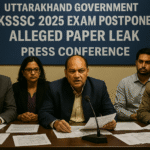
Dharmasthala News: Mass Burial Allegations, SIT Investigation & New Witnesses
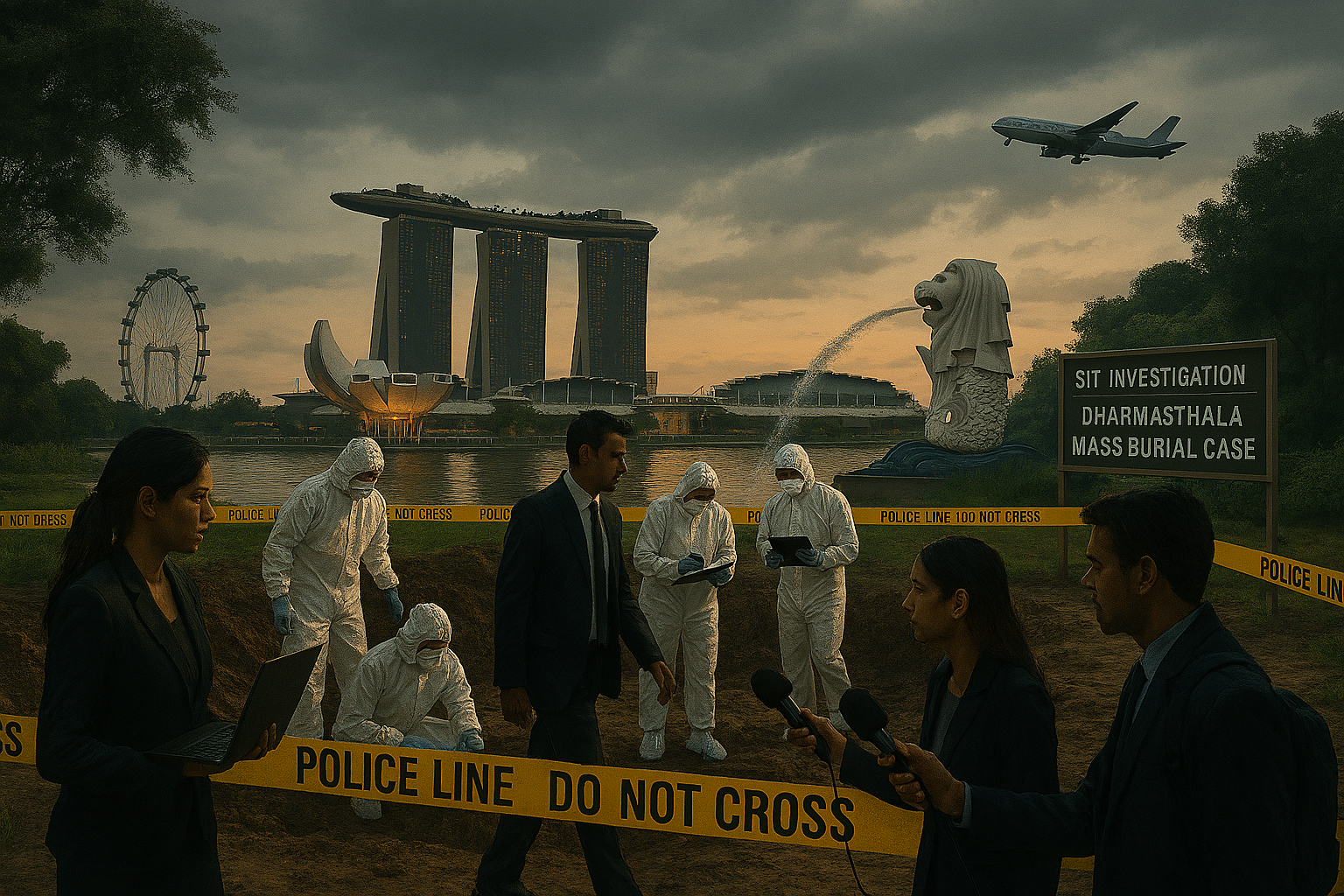
A whistleblower alleges he was coerced to bury hundreds of bodies—many of them minors and women—near Dharmasthala temple. Skeletal remains recovered by the SIT corroborate some claims amid growing public outrage in Karnataka.
Table of Contents
Published: August 03, 2025
Last Updated: August 03, 2025
Category: Criminal Justice, Legal Investigations, Regional News, Law Enforcement
Overview: Major Investigation Initiated in Karnataka
In July 2025, criminal investigations commenced in Dharmasthala, Karnataka, following allegations of historical crimes spanning multiple decades. A formal investigation was initiated by law enforcement authorities following testimony from a witness, with a Special Investigation Team (SIT) established by state government authorities on July 19, 2025.
The investigation represents one of Karnataka’s significant criminal justice undertakings, involving systematic excavation operations, forensic analysis, and coordination between multiple law enforcement agencies. The case has generated attention regarding criminal investigation procedures, evidence handling, and institutional accountability mechanisms in Indian law enforcement.
Understanding this investigation requires examining the procedural frameworks being employed, the forensic operations underway, the institutional responses from government and civil society, and the broader implications for criminal justice administration in the state.
Background and Initial Allegations
Witness Testimony and FIR Registration
On July 4, 2025, criminal proceedings were formally initiated with the registration of a First Information Report (FIR) following a witness statement. The witness, a 48-year-old former sanitation worker, provided testimony before judicial authorities under Section 183 of the Bharatiya Nagarik Suraksha Sanhita (BNSS), the procedural code governing criminal investigations.
The witness provided detailed testimony regarding events claimed to have occurred between 1995 and 2014. His sworn statement was documented through proper judicial procedures, establishing an official record that forms the foundation for subsequent investigation activities.
The FIR was registered under Section 211(a), which addresses failure to report certain offenses. This particular charge reflects the investigative focus on both alleged underlying incidents and potential failures in official notification procedures.
Nature of Allegations
The initial witness testimony included claims regarding systematic coercion, allegations involving vulnerable populations, and assertions regarding burial of human remains in forested areas near a religious institution. The testimony described activities spanning nearly two decades, suggesting extended duration for the alleged incidents.
The allegations included references to various victim categories, raising concerns regarding protection of vulnerable populations and adequacy of institutional safeguards. The nature of allegations prompted rapid official response from government authorities.
Formation of the Special Investigation Team
Government Response and Authorization
The Karnataka government authorized establishment of a Special Investigation Team on July 19, 2025, recognizing that the allegations required specialized investigative capabilities. This decision represented official acknowledgment that the case required dedicated resources and experienced personnel.
The SIT formation was announced through official government channels, establishing a formal investigative framework separate from routine police operations. This procedural approach enables focused investigation with dedicated personnel and resources.
Leadership and Professional Structure
DGP Pronab Mohanty, a senior police officer with extensive experience in complex investigations, was appointed to lead the SIT. The selection of such a senior officer reflected the perceived significance of the investigation and the requirement for experienced leadership in managing a multi-faceted inquiry.
The SIT composition includes forensic specialists, investigative officers with experience in sensitive cases, and coordination personnel for managing multi-agency response. This structure enables comprehensive investigation across technical, procedural, and administrative dimensions.
Investigative Authority and Powers
The SIT received comprehensive investigative authority including:
| Authority | Scope |
|---|---|
| Case Reopening | Authority to examine and reopen historical cases from the relevant period |
| Records Review | Access to missing person reports and related documentation |
| Forensic Operations | Direct oversight of excavation and forensic analysis activities |
| Multi-Agency Coordination | Authority to coordinate across multiple law enforcement jurisdictions |
| Witness Management | Implementation of witness protection measures and testimony procedures |
These powers enable the SIT to conduct systematic investigation across multiple case dimensions and coordinate various operational activities.
Operational Base and Public Engagement
The SIT established its operational headquarters in Mallikatte, Mangaluru, providing a centralized location for investigation coordination. This facility serves as the center for case management, evidence storage, and personnel coordination.
A dedicated public hotline was activated to enable witness communication and information provision. This mechanism recognizes that complex investigations of this nature may involve numerous individuals with relevant information dispersed across geographic and time periods.
Investigation Procedures and Forensic Operations
Site Identification and Preliminary Assessment
The investigation identified 13 potential sites requiring excavation based on witness testimony and investigative assessment. These sites were prioritized according to multiple criteria including witness corroboration, geographic accessibility, forensic likelihood, and evidence preservation potential.
Site selection reflected systematic investigative methodology combining witness information with professional forensic judgment regarding evidence probability at specific locations.
Excavation Timeline and Discoveries
Initial Phase (Days 1-2): Preparation and establishment of forensic protocols at primary excavation sites. Forensic teams deployed specialized equipment and established crime scene documentation procedures. Coordination protocols were established with judicial oversight authorities.
Day 3 Discovery: Excavation at Site 6 yielded human skeletal remains consisting of bone fragments. Associated materials recovered included documentation items and personal belongings potentially relevant for victim identification purposes.
Days 4-5 Operations: Systematic excavation continued at additional sites (7-10) with varying results. Some sites yielded no remains or significant evidence. Weather conditions in the region created operational challenges affecting excavation timeline and work procedures.
The excavation methodology incorporated standard forensic protocols including:
- Systematic site documentation with photographic records
- Careful evidence collection and preservation procedures
- Chain-of-custody protocols for recovered materials
- Judicial oversight and verification procedures
- Coordination with forensic specialists for in-situ analysis
Forensic Analysis and Evidence Processing
All recovered materials underwent systematic forensic examination through multiple specialized processes:
Anthropological Analysis: Assessment of skeletal remains for demographic information, health status, and potential cause indicators.
DNA Examination: Genetic analysis for victim identification and familial matching against missing person databases.
Material Analysis: Examination of recovered items for trace evidence, fiber analysis, and identification markers.
Documentation Analysis: Review of any written materials or identification documents recovered at excavation sites.
All forensic work proceeded under established protocols ensuring evidence admissibility and investigative integrity.
Additional Witness Testimony and Investigation Expansion
Second Witness Emergence
On August 2, 2025, a second witness, identified as Jayanth T., appeared at the SIT office in Belthangady with additional testimony. The emergence of a second witness corroborating the primary witness account represented significant investigative development.
Jayanth T.’s testimony included specific allegations regarding burial procedures and victim characteristics. His account provided independent corroboration of certain elements of the primary witness testimony.
Additional Allegations and SIT Response
The second witness provided detailed description of specific incidents, including references to victim identity and burial procedures. The SIT responded to this testimony by requesting formal documentation and requesting the witness provide supporting evidence for verification purposes.
This response reflected professional investigative procedure, combining testimonial information with evidence-based verification to ensure investigative integrity and appropriateness of any subsequent charges.
Witness Protection Procedures
Both witnesses received protection under investigative procedures established for individuals providing testimony regarding serious allegations. These protections included:
- Secure interview facilities
- Confidentiality provisions for testimony
- Personal security measures as appropriate
- Legal protections for whistleblower activities
Record Destruction and Archival Analysis
RTI Findings Regarding Official Records
Right to Information (RTI) inquiries revealed that records covering 2000-2015 were removed from official police archives. This record period overlap with the alleged crime period raised investigative and administrative concerns.
The destroyed records included:
| Record Category | Potential Impact |
|---|---|
| Unnatural Death Registers | Documentation of deaths requiring investigation |
| Post-Mortem Records | Medical examination files for deceased individuals |
| Missing Person Reports | Official reports of disappearances during the period |
| Photographic Evidence | Visual documentation that could aid identification |
The absence of these records created investigative challenges and raised questions regarding record management practices.
Timeline Analysis and Implications
The 2000-2015 record removal period directly overlaps with the 1995-2014 alleged crime timeline. This overlap generated questions regarding potential connections between record destruction and historical incidents.
However, establishing direct connection between record removal and alleged crimes requires careful investigative analysis distinguishing between coincidental timing and deliberate destruction. The investigation proceeded to examine circumstances surrounding record management decisions and implementing authorities.
Investigation of Administrative Procedures
Questions regarding record destruction prompted examination of administrative procedures governing:
- Record retention policies and timelines
- Authorization procedures for document removal
- Oversight mechanisms for official archives
- Access controls and documentation of removals
These administrative inquiries parallel criminal investigation of underlying allegations, representing comprehensive review of institutional procedures.
Historical Context and Cold Cases
Prior Unresolved Cases
Civil society organizations identified multiple historical cases remaining unresolved for extended periods. These cases included:
Padmalatha Case (1986): Involving alleged disappearance nearly four decades prior to current investigation, representing extended unresolution period.
Other Documented Cases: References to Vedavalli, Soujanya, Yamuna, and additional cases from historical records without resolution.
These cases prompted discussion regarding systematic review procedures for historical incidents and potential connections to patterns identified in current investigation.
Pattern Analysis and Case Linkages
Civil rights advocates requested systematic analysis of historical cases for potential patterns including:
- Victim profile similarities across cases
- Geographic proximity to current investigation areas
- Temporal clustering of incidents
- Consistency in victimology or methodology
Systematic pattern analysis remains part of ongoing investigative procedures.
Institutional Implications
The existence of numerous unresolved historical cases raised questions regarding:
- Adequacy of prior investigative procedures
- Effectiveness of oversight mechanisms
- Coordination between different police jurisdictions
- Application of modern investigative techniques to historical cases
These systemic questions prompted broader institutional review beyond immediate criminal investigation.
Civil Society Response and Advocacy
Organization Engagement
Women’s rights organizations, particularly All India Democratic Women’s Association (AIDWA), mobilized advocacy efforts related to the investigation. These organizations issued formal resolutions and public statements addressing investigation procedures and victim protection.
Civil society organizations called for comprehensive investigation procedures including:
- SIT independence from local political influences
- Comprehensive witness protection implementation
- Systematic review of connected historical cases
- Regular transparency updates to public
- Victim family support mechanisms
Advocacy Priorities
Civil society advocacy emphasized:
Investigation Integrity: Ensuring investigation remains free from political interference and maintains professional standards.
Victim Recognition: Formal acknowledgment of victim experiences and appropriate dignified memorial procedures.
Accountability Mechanisms: Ensuring that institutional failures receive appropriate administrative review and corrective procedures.
Prevention Systems: Implementing reforms to prevent similar incidents and ensure effective detection and response to future concerns.
Public Mobilization and Engagement
Civil society engagement generated public awareness regarding investigation procedures and systemic justice concerns. Public advocacy contributed to political pressure for adequate resource allocation and investigation commitment.
Government and Political Response
Chief Minister Statement
Karnataka Chief Minister Siddaramaiah issued public statements committing to transparent investigation procedures and resource allocation. The Chief Minister’s statement reflected government acknowledgment of investigation significance and commitment to justice processes.
Political leadership support provided crucial backing for SIT operations and contributed to public confidence in investigation procedures.
Resource Allocation and Support
The government authorized appropriate budgetary allocation and personnel resources for investigation operations. This authorization enabled deployment of necessary forensic equipment, specialized personnel, and operational facilities.
Resource provision reflected government commitment to comprehensive investigation rather than administrative closure of investigation.
Policy and Reform Discussion
Government authorities initiated discussion regarding potential policy reforms including:
- Record retention requirements for law enforcement agencies
- Inter-agency coordination protocols for multi-jurisdictional cases
- Witness protection framework enhancement
- Historical case review procedures
- Administrative oversight strengthening
These policy discussions parallel ongoing criminal investigation.
Forensic Science and Technology Implementation
Advanced Investigation Techniques
The investigation employed contemporary forensic methodologies including:
Anthropological Assessment: Examination of skeletal remains by forensic anthropology specialists to determine demographic characteristics and potential cause information.
Genetic Analysis: DNA profiling for victim identification and comparison with missing person databases and family DNA samples.
Soil and Material Examination: Chemical and biological analysis of burial site soil for evidence preservation assessment and trace evidence identification.
Documentation Analysis: Systematic review of any written materials or identification documents recovered during excavation.
Specialist Expertise Engagement
Investigation procedures incorporated expertise from multiple specialized fields:
- Forensic anthropologists experienced in skeletal analysis
- DNA specialists with victim identification experience
- Crime scene investigators with burial site experience
- Pathologists for cause of death assessment
- Legal experts for evidence admissibility procedures
Challenges and Operational Constraints
Evidence Preservation Complications
The significant time gap between alleged incidents and current investigation created evidence challenges:
- Natural decomposition of biological materials
- Environmental degradation of sites
- Soil and weather impacts on evidence preservation
- Potential contamination from natural processes
- Vegetation growth and landscape changes
These natural processes create investigation complications requiring specialized forensic expertise.
Geographic and Environmental Factors
The forested terrain surrounding Dharmasthala presented operational challenges:
- Remote site accessibility limitations
- Monsoon season weather complications
- Equipment deployment difficulties
- Personnel logistical requirements
- Environmental monitoring for excavation safety
Environmental factors required careful scheduling and operational planning.
Legal and Procedural Considerations
Investigation procedures required compliance with multiple legal frameworks:
- Criminal Procedure Code compliance for evidence collection
- Judicial oversight protocols for sensitive investigations
- Witness protection legal requirements
- Evidence chain-of-custody procedures
- Constitutional protections for all parties
International Comparisons and Precedent Cases
Global Context for Mass Grave Investigations
International precedents provide comparative frameworks for investigation procedures:
Argentina’s Dirty War Era: Systematic investigation of historical graves from military period through specialized courts and forensic teams.
Bosnia-Herzegovina Post-Conflict: Development of mass grave investigation protocols through international cooperation and tribunal procedures.
Guatemala Civil War: Truth commission investigations combining forensic work with historical analysis.
Colombia Missing Persons: Ongoing investigation procedures for disappeared persons through specialized task forces.
These international examples provided procedural models for systematic investigation, evidence handling, victim identification, and historical documentation.
Methodological Application
International investigation precedents informed:
- Systematic excavation and documentation procedures
- Forensic analysis methodologies
- Victim identification protocols
- Family notification procedures
- Historical record compilation
Investigation Timeline and Expected Progression
Current Phase (August 2025 Forward)
The current investigation phase emphasizes:
- Continuation of excavation at identified sites
- Preliminary forensic analysis of recovered materials
- Additional witness testimony collection
- Coordination with historical case reviews
- Public hotline information processing
Analysis Phase (Expected Timeline)
Following excavation completion, the investigation proceeds to comprehensive forensic analysis of all recovered materials, expected to extend over several months depending on material quantity and complexity.
Victim Identification Phase
Forensic analysis conclusions would inform victim identification procedures, including DNA matching, historical record correlation, and family notification processes.
Legal Proceeding Phase
Depending on investigation findings, legal proceedings would commence according to criminal procedure requirements, including charge formulation and judicial proceedings.
Implications for Criminal Justice System
Investigation Procedure Precedent
The Dharmasthala investigation may establish procedural precedents for investigating historical crimes including:
- Cold case reopening procedures
- Multi-jurisdictional investigation coordination
- Witness protection for sensitive cases
- Record review for historical incidents
- Forensic methodology application to historical cases
Institutional Accountability Mechanisms
Investigation findings regarding institutional procedures may prompt:
- Review of record retention policies
- Examination of historical case management
- Assessment of oversight procedures
- Analysis of inter-agency coordination
- Evaluation of administrative accountability
Legislative Consideration
Investigation experiences may inform legislative discussion regarding:
- Record retention requirements
- Witness protection framework enhancement
- Historical case review procedures
- Institutional oversight mechanisms
- Criminal justice administration reforms
Frequently Asked Questions
What specific allegations prompted the July 2025 investigation initiation?
A 48-year-old former sanitation worker provided sworn testimony under Section 183 of BNSS describing events alleged to have occurred between 1995 and 2014. The testimony included claims regarding forced participation in burial activities, allegations involving vulnerable victims including minors, and references to burial locations in forested areas. An FIR was registered on July 4, 2025, under Section 211(a) addressing failure to report offenses. The witness provided detailed testimony before judicial authorities, establishing official documentation for investigation foundation.
Who leads the Special Investigation Team and what is their professional background?
DGP Pronab Mohanty, a senior-ranking police officer with extensive experience in complex criminal investigations, heads the SIT appointed on July 19, 2025. The selection reflected recognition that experienced leadership was necessary for managing multi-faceted investigation involving historical crimes, multiple witness testimony, forensic operations, and institutional coordination. The SIT includes specialized forensic personnel, investigative officers, and coordination staff enabling comprehensive investigation across technical and procedural dimensions.
What physical evidence has been recovered during excavation operations?
Excavation at Site 6 on Day 3 of operations recovered 15 skeletal bone fragments assessed as potentially belonging to a male individual. Associated evidence included documentation items potentially useful for victim identification, rope materials potentially indicating binding or burial methods, clothing fragments for potential DNA analysis, and electronic items that may yield timeline or identification information. Excavations at other identified sites have proceeded with varying results, with 13 sites total identified for systematic investigation. All recovered materials undergo forensic analysis under established evidence handling procedures.
How does the second witness testimony from Jayanth T. expand the investigation?
RTI activist Jayanth T. appeared at SIT offices on August 2, 2025, with testimony regarding specific burial incidents. His account provided independent corroboration of elements in the primary witness testimony, including references to victim characteristics and burial procedures. The SIT requested formal documentation and supporting evidence from the second witness, reflecting standard investigative procedure combining testimonial information with evidence verification. The emergence of a second witness lends credibility to core allegations while expanding identified victims and procedural details.
What records were destroyed and how does this impact investigation procedures?
RTI inquiries revealed that records covering 2000-2015, overlapping with the alleged crime period (1995-2014), were removed from official archives. Destroyed documentation included unnatural death registers, post-mortem files, missing person complaints, and photographic evidence that could have aided victim identification. Record destruction creates investigation challenges including evidence gaps for historical analysis, inability to examine disappearance patterns from the period, and difficulties providing closure to families of missing persons. Investigation procedures now examine circumstances regarding record removal and administrative authorization procedures.
What historical cases are being reviewed in connection with current investigation?
Civil rights organizations identified multiple unresolved cases from historical records for potential connection review. The Padmalatha case from 1986 represents one of the oldest, suggesting potential scope of historical incidents. Additional cases referenced include Vedavalli, Soujanya, Yamuna, and others remaining unresolved for extended periods. Systematic pattern analysis is examining victim profile similarities, geographic proximity to Dharmasthala areas, temporal clustering of incidents, and consistency in victimology across cases. The identification of multiple historical cases prompted broader institutional examination of cold case procedures and inter-agency coordination mechanisms.
What role do civil society organizations play in the investigation context?
Women’s rights organizations including AIDWA mobilized advocacy efforts emphasizing comprehensive investigation procedures, witness protection implementation, and systematic case review. Civil society issued formal resolutions addressing investigation integrity, victim recognition, accountability mechanisms, and prevention system development. Advocacy efforts contributed to public awareness, political pressure for resource allocation, and investigation commitment. Civil society engagement represented important institutional check on investigation procedures and advocacy for comprehensive justice approaches.
What forensic methodologies and international expertise inform investigation procedures?
Investigation procedures employ contemporary forensic techniques including anthropological assessment of skeletal remains, DNA analysis for victim identification, soil and material examination for evidence analysis, and documentation analysis of recovered items. International expertise consultation occurred regarding mass grave investigation precedents from Argentina, Bosnia-Herzegovina, Guatemala, Colombia, and other regions with historical investigation experience. These methodologies informed systematic excavation procedures, evidence handling protocols, victim identification techniques, and historical documentation compilation approaches.
Key Statistics and Timeline Summary
Investigation Timeline
| Date | Event |
|---|---|
| July 4, 2025 | FIR registered under Section 211(a) |
| July 19, 2025 | Special Investigation Team formally established |
| Day 3 (Excavation) | Human skeletal remains discovered at Site 6 |
| August 2, 2025 | Second witness provides testimony |
| August 2025 | RTI findings regarding record destruction revealed |
Investigation Scope
| Category | Metric |
|---|---|
| Identified excavation sites | 13 locations |
| Alleged crime period | 1995-2014 (19 years) |
| Initial evidence discovery | Skeletal remains and associated materials |
| Witnesses | 2 primary testimonies |
| Team leadership | DGP Pronab Mohanty |
Conclusions and Key Takeaways
Investigation Foundation: The investigation proceeded on basis of formal witness testimony documented under established judicial procedures, with FIR registration establishing official criminal inquiry framework.
Systematic Operations: The SIT implemented comprehensive investigative procedures including site identification, systematic excavation, forensic analysis, and witness management according to professional standards.
Evidence Status: Physical evidence recovery through excavation operations provided factual basis for investigation progression, with forensic analysis ongoing to establish victim identification and historical context.
Institutional Response: Government authorities responded with appropriate resource allocation, leadership commitment, and policy review concerning institutional procedures and accountability mechanisms.
Civil Society Engagement: Women’s rights organizations and civil society groups contributed advocacy for comprehensive investigation, victim recognition, and prevention system development.
Historical Implications: Investigation raised broader questions regarding institutional accountability, record management, cold case procedures, and multi-jurisdictional investigation coordination requiring systematic institutional examination.
Justice Objectives: Investigation procedures remained focused on evidence-based inquiry, fair procedural compliance, and justice delivery for alleged victims while maintaining appropriate legal protections for all parties.
About the Author
Nueplanet is a criminal justice and legal affairs correspondent specializing in investigation procedures, judicial processes, and law enforcement developments. With extensive experience analyzing criminal justice systems, investigation methodologies, and legal proceedings, Nueplanet provides evidence-based analysis of complex criminal investigations grounded in verified sources and established procedures.
Nueplanet’s approach emphasizes accuracy, neutrality, and respect for all parties involved in legal proceedings while maintaining commitment to transparent reporting on criminal justice matters. This perspective guides analysis of investigations, legal procedures, and institutional accountability processes.
Nueplanet’s Commitment to Accuracy and Verification
This article prioritizes factual accuracy and relies on verified sources including official government statements, FIR documentation, court procedures, and authoritative news reports. All investigation procedures reference established criminal law provisions and official protocol documentation.
Timeline information derives from verified government announcements and official SIT statements. Evidence descriptions reference documented forensic findings and official investigation reports. Witness information derives from documented testimony statements and official investigation procedures.
The analysis maintains neutral perspective regarding ongoing legal matters, avoiding predetermined conclusions about guilt or innocence. All parties receive fair procedural consideration consistent with legal protections and investigative standards.
Readers are encouraged to consult official government statements, court filings, and authoritative news organizations for additional information regarding ongoing legal proceedings and investigation developments. This analysis will be updated as verified information becomes available regarding investigation progression and legal outcomes.
Summary
The Dharmasthala investigation represents a significant undertaking in criminal justice administration involving systematic investigation of allegations spanning multiple decades. The Special Investigation Team, established under experienced leadership with comprehensive authority, proceeded through systematic excavation, forensic analysis, and witness management procedures following established legal frameworks.
Physical evidence recovery through excavation operations provided factual foundation for investigation progression, with ongoing forensic analysis addressing victim identification and historical context. The emergence of additional witness testimony lent credibility to core allegations while expanding investigation scope.
Government resource allocation, political leadership commitment, and civil society advocacy contributed to investigative integrity and institutional accountability focus. Investigation findings regarding institutional procedures may inform policy reforms and improved coordination mechanisms across law enforcement agencies.
The investigation remains ongoing with expected progression through analysis, identification, and legal proceeding phases according to established criminal procedure requirements. Justice objectives remain centered on evidence-based inquiry, fair procedural compliance, and appropriate legal protections for all parties involved in proceedings.
For ongoing updates regarding investigation developments and legal proceedings, consult official government statements, court filings, and authoritative news sources covering criminal justice matters.
Latest Posts
- 71st National Film Awards 2025
- Pakistan Champions vs South Africa Champions – WCL 2025 Final Match Report
- Dortmund vs LOSC: BVB’s Dominant 3-1 Victory in Club Friendly Clash
- The POCSO Act in 2025: Law, Challenges & Real‑World Impact
- NEET PG 2025 – Exam Day Timing, Format, and Candidate Review
- Delhi Metro Yellow Line – Route, Operations & Future Expansions
Helpful Resources
India Today: RTI revelations trigger shocking testimonies—buried “like one would bury a dog”.
Times of India: SIT finds partial skeletal remains on Day 3.
Times of India: No remains found at other sites—Day 4 and Day 5 updates.
Wikipedia: Dharmasthala mass burial case overview—timeline, allegations, SIT formation.







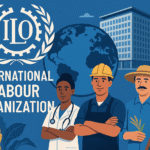




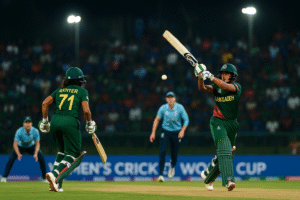






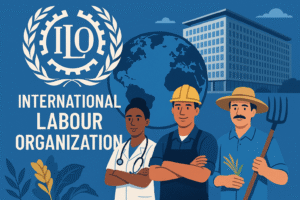


Post Comment